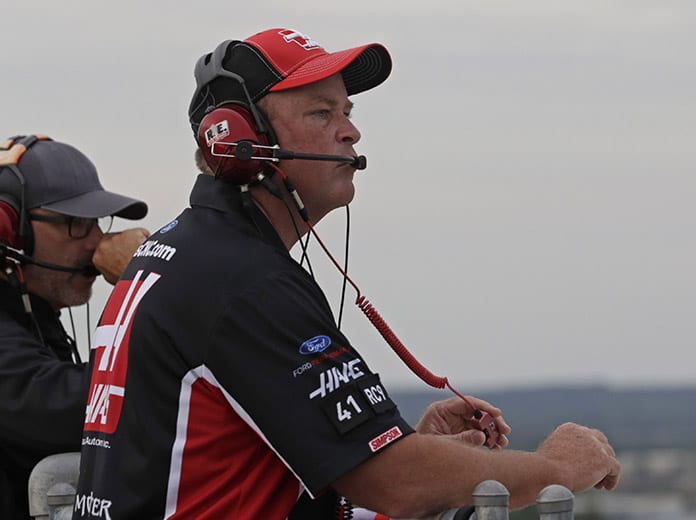Despite what some people might think, being a spotter in the Monster Energy NASCAR Cup Series is no easy task.
Just like an accountant has to know the latest tax laws, any good spotter has to know the latest rules implemented by NASCAR. From pit-road speed to race procedure and everything in between, spotters have to know the rules like the back of their hands.
They also need to be familiar with the latest rules package and understand how that will change the way the cars drive and how that will affect how another car may attempt to pass. It’s all a vital part of being a spotter.
“With NASCAR, it is ever-changing as far as … now with the new (rules) packages that we have it’s a little different,” explained Tim Fedewa, Kevin Harvick’s spotter. “We’re drafting a lot more with this package. There is always something new that comes along that you might have to change your thought process a little on.”
Another vital part of being a spotter is what they bring with them to the spotters’ stand on race day. Radios are an obvious part of any spotter’s kit, but what else do they bring with them when the head to the roof of a speedway to spot a race?
“I have four radios,” noted Coleman Pressley, the spotter for Team Penske driver Brad Keselowski. “A lot of spotters do it differently. I have each side of my headset … my right side of my headset is Brad. I listen to him and I listen to myself. I listen to myself to make sure my radios are working. If I can hear myself, I know Brad can hear me. Then on my left side is a direct communication with Paul (Wolfe, crew chief) on the pit box and NASCAR.
“You always pack a cooler full of water, which a lot of times I’m lazy on, so luckily I have three teammates who all bring coolers and I just piggyback off of them,” Pressley said. “Some snacks, you’ve got your FanVision, that’s really important — especially at short tracks for reading lap times because there is a lot you can still do there with managing your pace. That’s pretty much my spotter bag.”
The work doesn’t stop when spotters leave the race track.
Fedewa and Pressley are both involved in post-race meetings with their respective drivers and crew chiefs. They also both review film of whatever race is next to see if they can learn anything from the previous event at that particular speedway.
“I have a debrief after the race with Rodney (Childers, crew chief) or Kevin,” Fedewa said. “We kind of just go over things. The week going into the race you try to watch the last race at that particular speedway and just see the characteristics. You try to go over your notes as to what you had there the last time and what transpired. Basically, the same thing a crew chief or driver would do, just try to relive the last race and see if you can do a little better.”
Perhaps the most important part of being a spotter is knowing what the driver needs to be better. According to Pressley, sometimes that means simply being a cheerleader.
“More than anything you’ve got to know what the driver can and can’t see and what he needs in certain situations and what emotion they’re feeling so you know what kind of cheerleader they need on the other side,” Pressley said.
